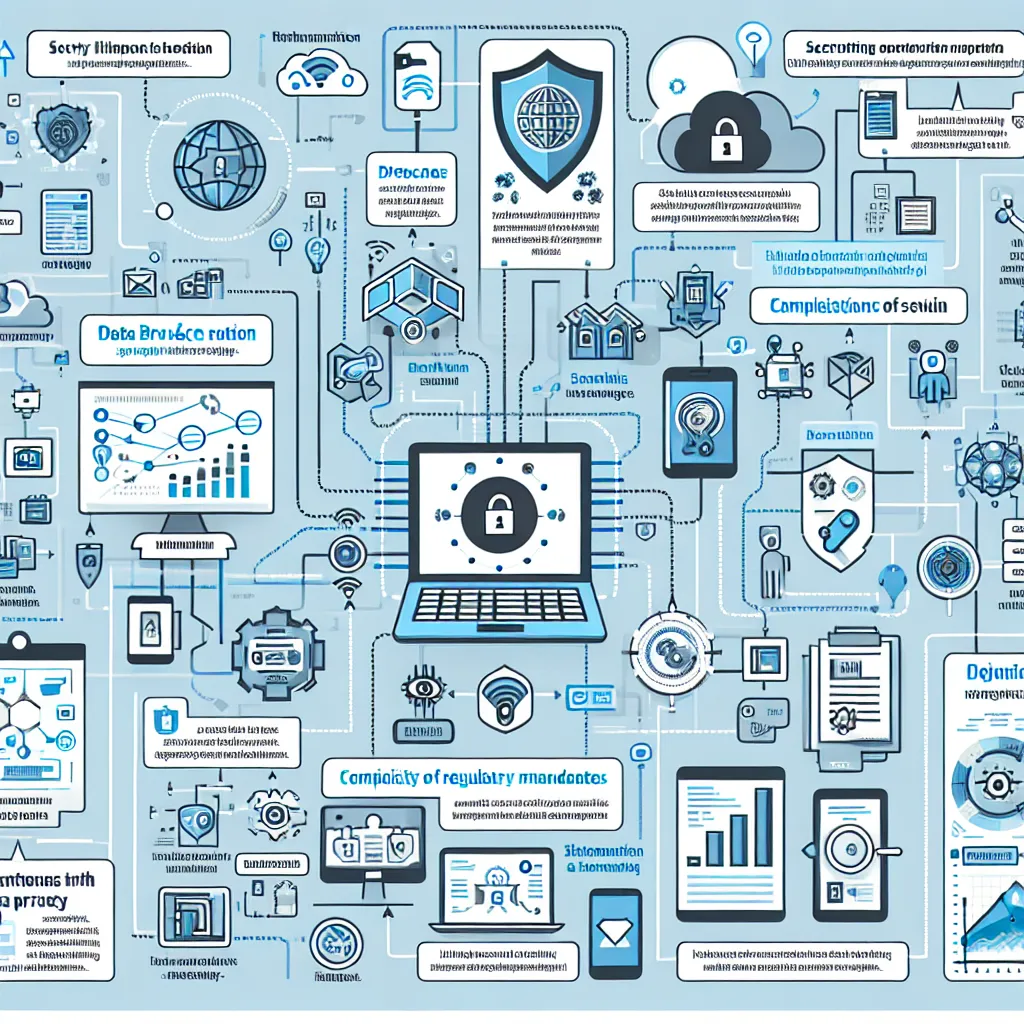The IELTS Reading section is a crucial component of the test, assessing your ability to comprehend complex texts and extract relevant information. Today, we’ll focus on a topic that has become increasingly prevalent in recent years: “Challenges of data privacy in the digital age.” This subject has appeared in various forms in past IELTS exams and, given its ongoing relevance, is likely to resurface in future tests.
Based on our analysis of past IELTS exams and current global trends, we predict that topics related to digital privacy will continue to be featured in upcoming tests. The frequency of this theme in academic and public discourse makes it a prime candidate for IELTS reading passages. Let’s dive into a practice exercise to help you prepare for this potential topic.
Reading Passage
The Digital Privacy Dilemma
In an era where our lives are increasingly intertwined with technology, the issue of data privacy has become a pressing concern. From social media platforms to online shopping and smart home devices, our digital footprints are expanding rapidly, leaving behind a trail of personal information that can be collected, analyzed, and potentially exploited.
One of the primary challenges in ensuring data privacy is the sheer volume of information being generated. Every click, purchase, and interaction online contributes to an individual’s digital profile. This wealth of data is a goldmine for businesses and marketers, who use it to tailor advertisements and services. However, it also raises questions about consent and the extent to which users are aware of how their information is being used.
Another significant challenge is the complexity of data collection and storage systems. With cloud computing and global data centers, personal information can be stored across multiple jurisdictions, each with its own set of privacy laws and regulations. This fragmentation makes it difficult to enforce consistent privacy standards and complicates the process of holding organizations accountable for data breaches.
The rise of artificial intelligence and machine learning algorithms has further complicated the landscape of data privacy. These technologies can process vast amounts of data to make predictions and decisions, often in ways that are not transparent to users. This lack of transparency raises concerns about algorithmic bias and the potential for automated systems to make unfair or discriminatory judgments based on personal data.
Governments and regulatory bodies are grappling with how to address these challenges. The European Union’s General Data Protection Regulation (GDPR) is one example of an attempt to give individuals more control over their personal data. However, the global nature of the internet means that regional regulations may have limited effectiveness in protecting users worldwide.
As technology continues to advance, new challenges emerge. The Internet of Things (IoT) is connecting more devices to the internet, from refrigerators to cars, creating new vectors for data collection and potential privacy breaches. Biometric data, such as facial recognition and fingerprints, is becoming more commonplace, raising concerns about the security and ethical use of such sensitive information.
Educating users about data privacy is another significant hurdle. Many people are unaware of the extent to which their data is collected and used, or the steps they can take to protect their privacy online. Improving digital literacy and promoting transparency in data practices are crucial steps in empowering individuals to make informed decisions about their digital lives.
Balancing the benefits of data-driven innovation with the need for privacy protection remains an ongoing challenge. As we move forward in the digital age, finding solutions to these privacy concerns will be essential for building trust in technology and ensuring that the digital revolution continues to benefit society as a whole.
 Data Privacy Challenges Infographic
Data Privacy Challenges Infographic
Questions
True/False/Not Given
Decide if the following statements agree with the information given in the passage. Write:
TRUE if the statement agrees with the information
FALSE if the statement contradicts the information
NOT GIVEN if there is no information on this
- Every online interaction contributes to an individual’s digital profile.
- Cloud computing has made it easier to enforce consistent privacy standards across different countries.
- The GDPR has been universally successful in protecting user data globally.
- Biometric data is considered more secure than traditional forms of personal information.
- Improving digital literacy is crucial for helping individuals protect their privacy online.
Multiple Choice
Choose the correct letter, A, B, C, or D.
-
According to the passage, one of the main challenges in ensuring data privacy is:
A) The lack of internet access in some areas
B) The volume of information being generated
C) The high cost of data storage
D) The slow speed of internet connections -
The passage suggests that artificial intelligence and machine learning:
A) Always make fair and unbiased decisions
B) Are completely transparent in their decision-making processes
C) Can process large amounts of data quickly
D) Are not widely used in data analysis -
The Internet of Things (IoT) is mentioned in the passage as:
A) A solution to data privacy concerns
B) A new challenge for data privacy
C) An outdated technology
D) A replacement for cloud computing
Matching Headings
Match the following headings to the correct paragraphs in the passage. Write the correct number i-viii next to questions 9-13.
i. The challenge of regulating global data flows
ii. The role of AI in complicating privacy issues
iii. The importance of user education in data privacy
iv. The volume of data in the digital age
v. New technologies bringing new privacy concerns
vi. The difficulty of balancing innovation and privacy
vii. Government attempts to protect personal data
viii. The benefits of data collection for businesses
- Paragraph 2 _____
- Paragraph 3 _____
- Paragraph 4 _____
- Paragraph 5 _____
- Paragraph 7 _____
Answer Key and Explanations
-
TRUE – The passage states, “Every click, purchase, and interaction online contributes to an individual’s digital profile.”
-
FALSE – The passage mentions that cloud computing and global data centers make it “difficult to enforce consistent privacy standards.”
-
NOT GIVEN – While the GDPR is mentioned as an example of regulation, its success is not discussed.
-
NOT GIVEN – The passage mentions concerns about biometric data but doesn’t compare its security to traditional forms of personal information.
-
TRUE – The passage states, “Improving digital literacy and promoting transparency in data practices are crucial steps in empowering individuals to make informed decisions about their digital lives.”
-
B – The passage mentions “the sheer volume of information being generated” as a primary challenge.
-
C – The passage states that AI and machine learning “can process vast amounts of data to make predictions and decisions.”
-
B – The IoT is described as “creating new vectors for data collection and potential privacy breaches,” indicating it’s a new challenge.
-
iv – This paragraph discusses the volume of data generated by digital interactions.
-
i – This paragraph talks about the challenges of regulating data across different jurisdictions.
-
ii – This paragraph focuses on how AI and machine learning complicate data privacy issues.
-
vii – This paragraph mentions the GDPR as an example of government regulation.
-
iii – This paragraph discusses the importance of educating users about data privacy.
Common Mistakes to Avoid
-
Overlooking key phrases: Pay attention to modifiers like “all,” “always,” or “never” in True/False/Not Given questions. These can change the meaning of a statement significantly.
-
Making assumptions: Stick to the information provided in the text. Don’t let your personal knowledge or opinions influence your answers.
-
Misinterpreting “Not Given”: Remember, this option means the information is not provided in the text, not that it’s false.
-
Rushing through the passage: Take time to understand the main ideas and structure of the text before attempting the questions.
-
Ignoring context: Consider the broader context when matching headings or answering multiple-choice questions.
Vocabulary
- Intertwined: closely connected or linked
- Digital footprint: the information about a person that exists on the Internet as a result of their online activity
- Goldmine: a rich source of something desired
- Fragmentation: the process or state of breaking or being broken into fragments
- Algorithmic bias: systematic errors in computer systems that create unfair outcomes
- Grappling: struggling to deal with or overcome something
- Vectors: a way of transmitting something
Grammar Focus
Pay attention to the use of present perfect tense in the passage, e.g., “has become,” “has further complicated.” This tense is often used to describe recent changes or ongoing situations, which is particularly relevant when discussing current challenges in technology and privacy.
Tips for IELTS Reading Success
-
Practice active reading: Engage with the text by predicting content, asking questions, and summarizing main points.
-
Improve your vocabulary: Regularly learn new words related to technology, privacy, and current affairs.
-
Time management: Allocate your time wisely between reading the passage and answering questions.
-
Skim and scan effectively: Quickly identify main ideas and locate specific information.
-
Read the questions carefully: Understand exactly what each question is asking before searching for the answer.
-
Use contextual clues: If you encounter unfamiliar words, try to guess their meaning from the context.
-
Practice regularly: Consistent practice with various question types and topics will improve your speed and accuracy.
Remember, success in the IELTS Reading section comes from a combination of language skills, test-taking strategies, and familiarity with a wide range of topics. Keep practicing and stay informed about current issues like data privacy to be well-prepared for your exam.
For more practice on related topics, check out our articles on challenges in regulating digital platforms and ethical concerns in data-driven marketing.


